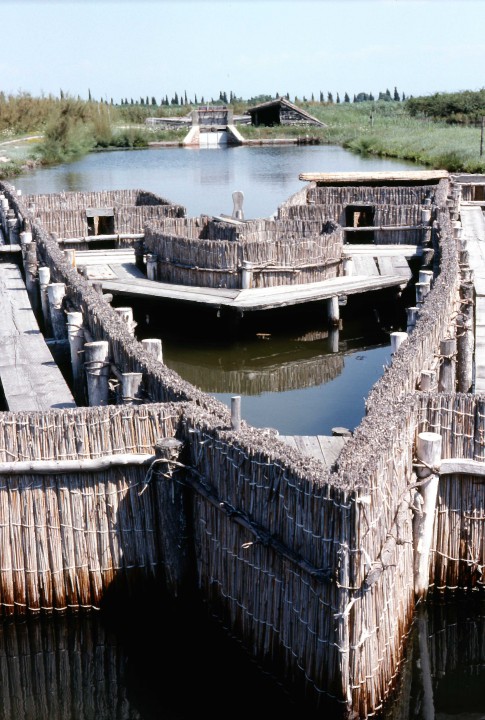Certain stretches of lagoon, especially in Grado lagoon (1,400 hectares) and around Marano (300 hectares), have been enclosed through the construction of artificial banks and turned into extensive fish farms. Access to the sea is provided by locks or sluices which are opened by the fish farmer to change the water and to enable the fish to move to and fro. In spring the outward flow encourages the newly-born fry to migrate naturally from the sea to the lagoons in their search for food. Other young fish are caught along the sandy coasts with special nets known as “trate”and sold for introduction into the “valli” fish reserves. In autumn the flow into the reserves brings into play the “lavorieri”, machines that select farmed fish, returning to the fish farms those that are still too small to be sold. Extensive aquaculture relies on the food supply that the fish (especially gilt-head bream, sea bass, grey mullet and eels) find readily available in the reserves, while smaller areas have been turned into intensive fish farms, where supplementary feed is provided by the fish farmer. Low winter temperatures, inadequate oxygen supply in summer and the presence of fish-eating birds are all serious problems in “valle” aquaculture, which thus requires dedication, a high degree of expertise and no little experience to turn a profit. The species most commonly found in the “valli” are obviously those that best tolerate variations in salinity and temperature, such as grey mullet, sea bass and gilt-head bream.

